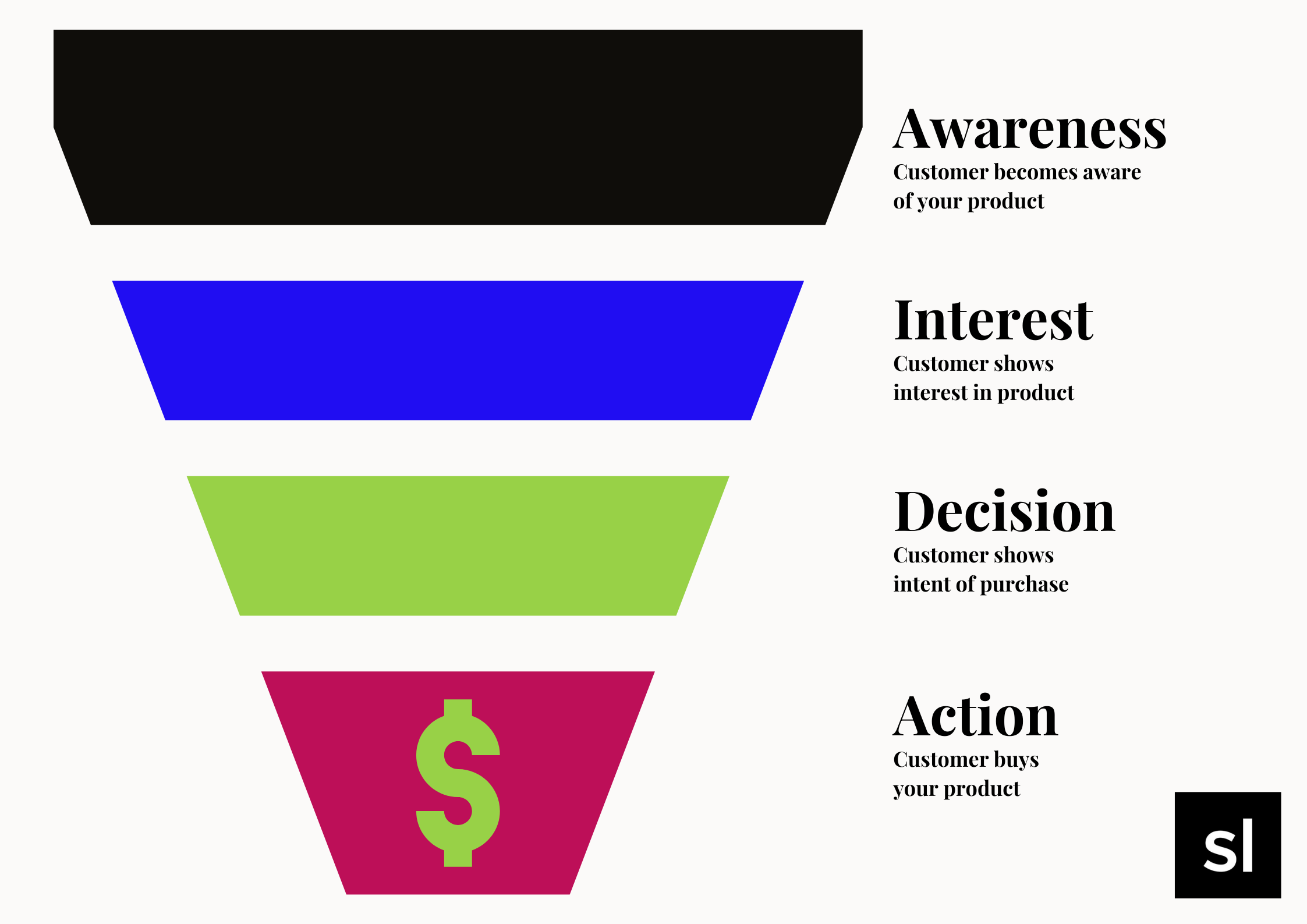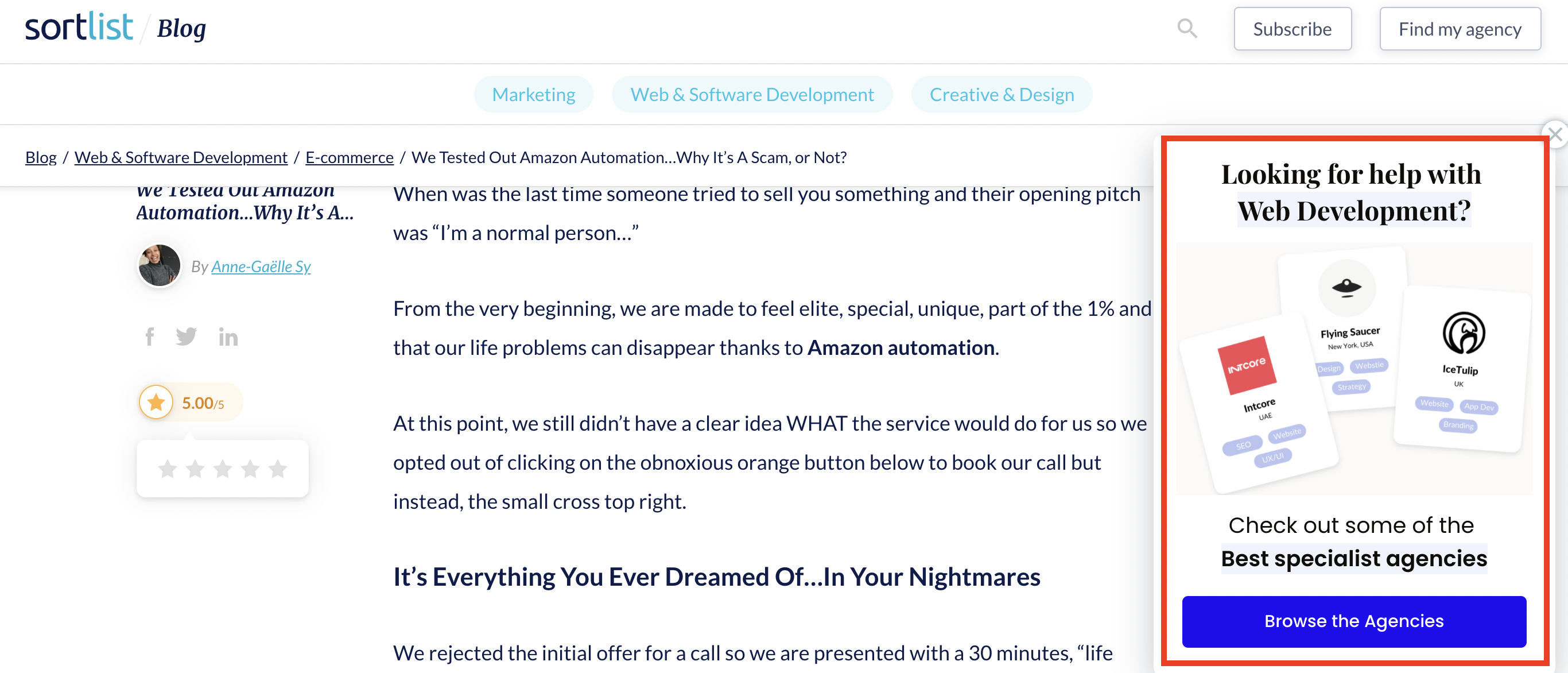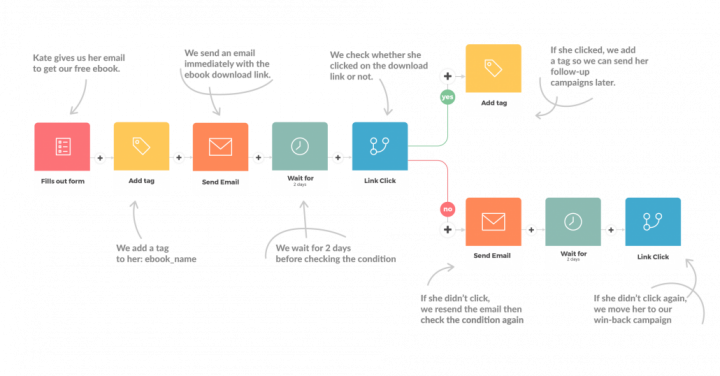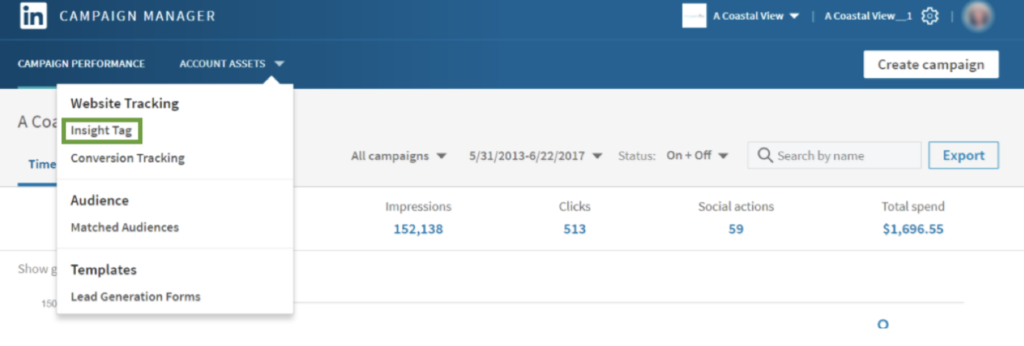
Grasping the B2B Marketing Funnel: 4 Steps to Creating Your Own
Last update: 23 August 2023 at 02:03 pm
Do you know that generating compelling content is a top content marketing problem for 54% of B2B marketers?
As a result, you may not need to be concerned about being in the minority. It takes a lot of time, money, and resources to match the audience’s demands with content. That is why, to produce successful outcomes, we require a scientific method.
In this post, we’ll look at how a B2B marketing funnel works and how it can be used in any marketing strategy.
What Is a B2B Marketing Funnel?
A marketing funnel is utilized in virtually every organization across all sectors.
E. St. Elmo Lewis created a theoretical model in the 19th century that traces a customer journey from the moment a brand emerges in customers’ consciousness until the purchase.
The lead generation and conversion processes are both parts of the B2B marketing funnel, with the lead generating phase being automated but the conversion step requiring human involvement.
This is because the B2B sales process involves a lot of decision-makers from the lead qualifying stage through the finalization of mutual agreements.

Let’s break it down and see what each sales funnel stage looks like in detail.
Stage 1: Awareness
You attract all potential consumers into the funnel at this stage by raising awareness of your company’s brand, product, and solutions.
Your marketing plan should incorporate everything that allows you to reach new prospects on relevant channels to raise awareness. For rapid results, you may use sponsored promotions on social media and search engines, or you can develop organically.
If you require extra help with your social media marketing, consider working with a specialised social media agency to boost your revenue.
However, for the best results, usually advocated is combining paid and organic marketing. PPC advertisements on Google, for example, combined with efficient search engine optimization (SEO), may help you not only generate visitors to your website but also increase brand memory and trust by ranking first on the search results page.
Guest posting on relevant websites where your target audience spends time keeping up to date may also be a good way to raise awareness among existing customers and potential buyers.
Stage 2: Interest
At this level, you pique your existing customer interest in the brand, which you initially piqued at the awareness stage.
For this, you may use social media to generate leads with more information about the pages they were looking at on the website during their prior visits.
Facebook Pixels, Twitter Tags, and LinkedIn Insight Tags are analytics tools offered by social media sites like Facebook, Twitter, and LinkedIn that track users’ activity on your website and allow you to retarget them with tailored advertising based on their past actions.
In this manner, you can keep in touch with them and develop contact with them that is more customized and relevant, allowing them to make better judgments in your favor.
Stage 3: Engage
You have data on the most likely potential customer or targeted leads in your database up to this point.
A prospect is already 57% into the purchase process when they reach this level of the B2B sales funnel. It indicates that the prospect sees your firm as a viable provider among the competition.
Keep your leads engaged and thrilled at this level with marketing material such as whitepapers, blog articles, client testimonials, case studies, and so on. The sales teams generally enter the picture at this point to nurture the most qualified leads. The sales staff begins to contact them in an attempt to get them into the sales process.
This is the most crucial step of the sales funnel since it determines how far the discussion between both sides may go based on what you do and how you keep your existing clients.
Stage 4: Action
Your goal at this point should be to get your repeat visitors to take action on the landing page. Buttons with enticing content like “Request a callback” or “Download Now” are frequent examples.

Lead generation relies heavily on landing pages. This is why the content, design, and CTAs on your page should all be done strategically so that visitors can locate information that is relevant to their requirements and be compelled to do what you want them to accomplish on the page.
When potential customers perform any of these actions, you’ll have the information you need to move the discussion beyond social media and lead them to the next stage, and so on, until they’re ready to speak with salesforce.
Sales Process
To go forward in the buying process, the sales team speaks with leads who demonstrated a high degree of engagement in the previous stage.
By sending them highly targeted emails, the sales team seeks to develop a one-on-one interaction with such leads. Also, cold outreach becomes more successful at this level since the prospect already knows a lot about the brand and may be interested in continuing the conversation.
If everything goes well and the paying customer still wants to buy from you, the salesperson schedules their first encounter, which is when the “Opportunity” occurs.
When the paying customers commit to doing business with your organization and the opportunity with them is closed-won, they become a client.
Now, in B2B sales, the time it takes to get from the initial meeting with prospects (opportunity) to signing the final contract is determined by a variety of factors such as the number of decision-makers involved, financial limitations, and so on. It might last as little as a day or as long as a few months.
How to Create a B2B Sales Funnel in 4 Steps
No one action sequence can guarantee a 100% flawless result when it comes to creating a B2B sales funnel. However, there are a few easy guidelines to follow that may help you avoid common blunders while building a funnel that matches your company strategy.
Develop a Solid Pipeline to Aid in the Sales Process
A sales procedure should be in place for every sales force. To make it, you’ll need to organize the actions of your team in three different stages:
- When is the initial phase?
- Who is in charge?
- What is the task?
The steps of the sales funnel will serve as markers for each dimension. Creating a B2B sales pipeline allows you to visualize your sales process in real-time. It should include all pertinent information about the prospects, opportunities, and clients with whom you presently collaborate.

A pipeline is a useful tool for tracking and analyzing your sales team’s activity as well as forecasting income. Build a strong B2B sales pipeline to manage your sales process and observe how quickly your revenues increase.
Improve the Sales Specialisation of Your Team
You’ll notice that the activities at the top of the funnel are extremely distinct and demand a different set of abilities than those at the bottom once you’ve built a long sales cycle.
An experienced sales manager should realize that no single individual can do all of these responsibilities at the same level of efficiency.
This is when having a sales specialist comes in useful. Though it was only just launched, it has already shown to be a beneficial addition to sales teams. Sales specialization, of course, follows the logic of the purchase process and allows you to focus on each stage of the B2B sales funnel.
SDRs and data enrichment experts work at the early stages of the funnel. Sales managers handle the middle and late phases. You should engage project managers to fulfill the demands of your existing clients if your funnel continues beyond the purchase step.
To create a B2B sales pipeline, you’ll need to create numerous jobs on your team, employ the proper personnel, and train them in effective sales techniques. At each level, make sure you’re communicating with the prospect.
At Each Level, Make Sure You’re Communicating With the Prospect
When a potential customer embarks on the buyer’s journey, they look for and gather information to help them make a buying choice and progress to the next step. They can get this information from three different places:
- The Salesforce
- The business provides content marketing through a variety of platforms.
- Client testimonials and impartial third-party assessments
- A consumer needs useful information at every stage of the purchasing process.
It’s just as vital for a marketing team to assist the sales team’s efforts as it is to supply all sorts of relevant information at each stage of the buying process.
Calculate Conversion Rates Regularly to Improve Your B2B Sales Funnel
You should always focus on enhancing the weaker aspects of your business to offer just relevant information about your firm to assist potential buyers in picking you over other suppliers. Analyzing your B2B sales funnel might offer you useful information.
You can determine the conversion rates between these stages by keeping track of the number of purchasers at each stage of the buying funnel. This will allow you to see where your teams have done outstanding work (and understand what makes it so effective), as well as identify the weak places so you can figure out how to address them.
Without a doubt, not all of the prospects that enter your B2B sales funnel will remain there. However, if you notice a dramatic drop in leads at any moment, you should modify your contact with them at that time.
Summing Up
In B2B, you can only succeed by providing the finest possible education to your clients about their challenges and the solutions you’re giving, not by keeping them in the dark.
As a result, make sure that you’re giving the greatest resources to educate your prospects along your B2B marketing funnel so that they can progress to the next step and eventually become your client.






